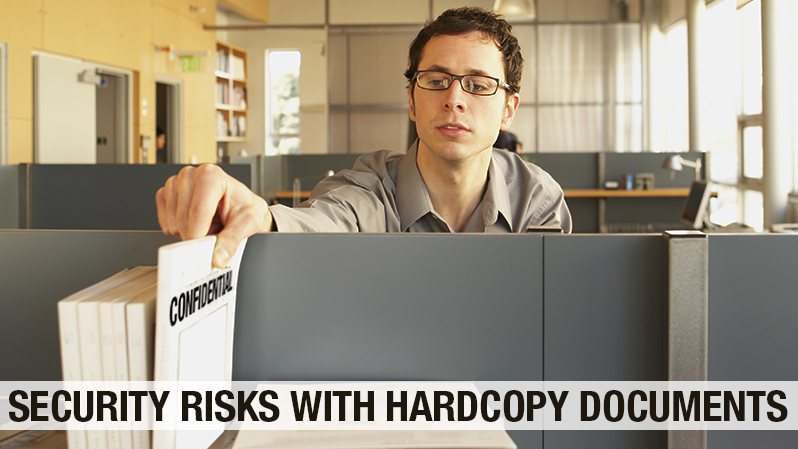
You’ve got locks on the doors and a security system to protect your business from the outside, but are you leaving the doors wide open for employees to access confidential information from hardcopy documents on the inside?
“An employee is 15 times more likely than a non-employee
to steal from an employer.”
The US Chamber of Commerce reports that an employee is 15 times more likely than a non-employee to steal from an employer. Even though this statistic covers a wide range of industries, it does highlight the fact that you may have this problem, and not even know it!
The most popular hardcopy targets include employee records, financial statements, payroll, trade secrets and client information that could be damaging if placed in the wrong hands. According to the FBI, it normally takes 18 months for a business to realize something (information or an asset) has been inappropriately removed.
One of the questions we ask business leaders attending our weekly Document Management Webinar with our partners at Laserfiche is “Are your documents as secure as you think? “
If you’re wondering how you can better secure your company’s information, be sure to check these high risk places to make sure your private information isn’t vulnerable:
- Printer Output Tray: Arguably the number one spot in the office where an employee could see what they shouldn’t. Think about how many times you have sorted through someone else’s prints to find your own. Haven’t you seen things that you probably shouldn’t?
- Trash Containers: People sometimes forget what documents need to be shredded for confidentiality. Do you have a proper disposal process? Think of what a “dumpster diver” might find if they went through your garbage!
- Filing Cabinets: You may have your documents under lock and key in a filing cabinet, but who has those keys? According to the American Society of Employers, 55% of internal employee theft is done by managers. They are probably the people who hold most of the keys.
- Office Desks: Do you pack up all your confidential information when you go to the restroom, take a break or go out to lunch? Without proper precautions, this can leave your information vulnerable to internal and external people who may have a view.
To validate the need to protect hardcopy documents from risk of exposure, loss, or damage, some organizations opt to store their hardcopy business records offsite at a secure storage facility. Of course this means you have to request your documents be physically returned to you when you need them and you’ll also pay a hefty fee to park each banker box every month.
Alternatively, most progressive companies have found tremendous cost savings, efficiency and security advantages by migrating their hardcopy documents into digital files. Once scanned into a digital format and placed into an electronic content management system, hardcopy information can be properly protected by password and user profile restrictions for maximum security.
Interested in learning about additional benefits of scanning hardcopy documents into digital files? Read our recent blog on “How Scanning Will Help Your Business”.

